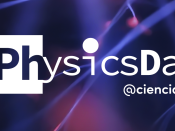Por Afonso Loureiro (Arditi, IDL).
Fiber optics is a highly efficient technology for transmitting data over long distances, having quickly surpassed other alternatives. However, intrinsic imperfections in optical fibers lead to light scattering into different modes (Rayleigh, Stokes and Raman), affecting both the range and signal integrity. Analysis of the fraction of light reflected back to the emitter allows the identification of sections of the fiber subject to mechanical stress or variations in temperature and pressure.
In this seminar we will address Distributed Acoustic Sensing (DAS) technology and systems based on Rayleigh scattering phase measurement (Φ-OTDR), capable of detecting apparent deformations over hundreds of kilometers of optical fiber. The propagation time of the light impulses and their respective reflections allows each segment of the fiber to be identified, transforming it into an extensive chain of sensors. Depending on the application, distributed sensors can be configured in different ways to control the signal-to-noise ratio or enhance specific frequencies. With a single interrogator, it is possible to obtain data at high temporal and spatial sampling rates, providing a unique perspective on several processes.
DAS systems do not directly measure fiber strain, but rather apparent strain, since they are equally sensitive to temperature and pressure variations. Although proper calibration is essential to ensure data comparable to those of traditional sensors, this sensitivity to different parameters expands its applications, allowing its use in areas such as seismology, oceanography, marine acoustics, and marine biology.
There is still a long list of challenges to face, but the potential of DAS for observing the Earth and Oceans is undeniable. Its ability to transform fiber optic networks into distributed sensors enables continuous, large-scale monitoring of natural phenomena, offering a robust, versatile and cost-effective alternative to conventional technologies. With the advancement of calibration and data processing techniques, DAS is expected to play an increasingly relevant role in the early detection of seismic events, in the analysis of ocean dynamics and in the protection of marine ecosystems.
Transmissão via Zoom (pw: SES2024IDL).

























